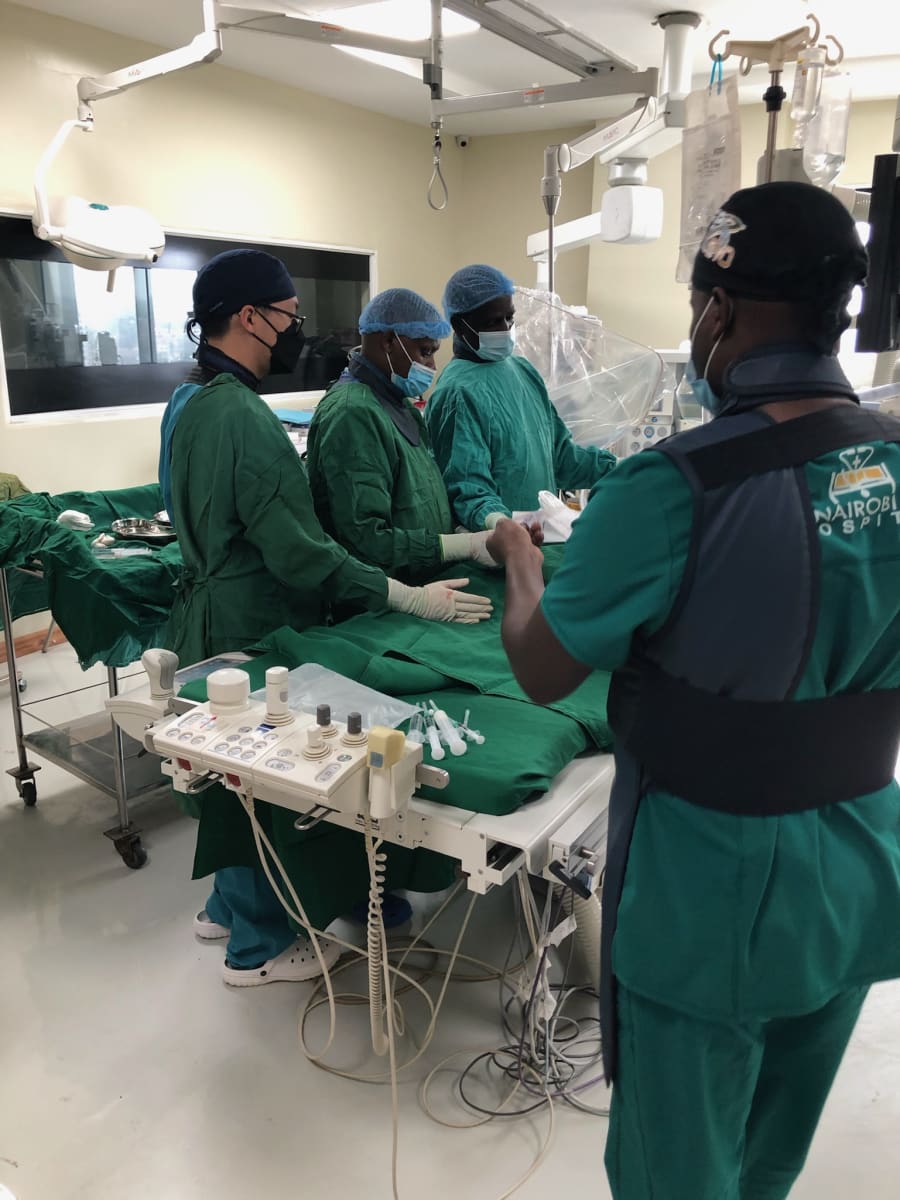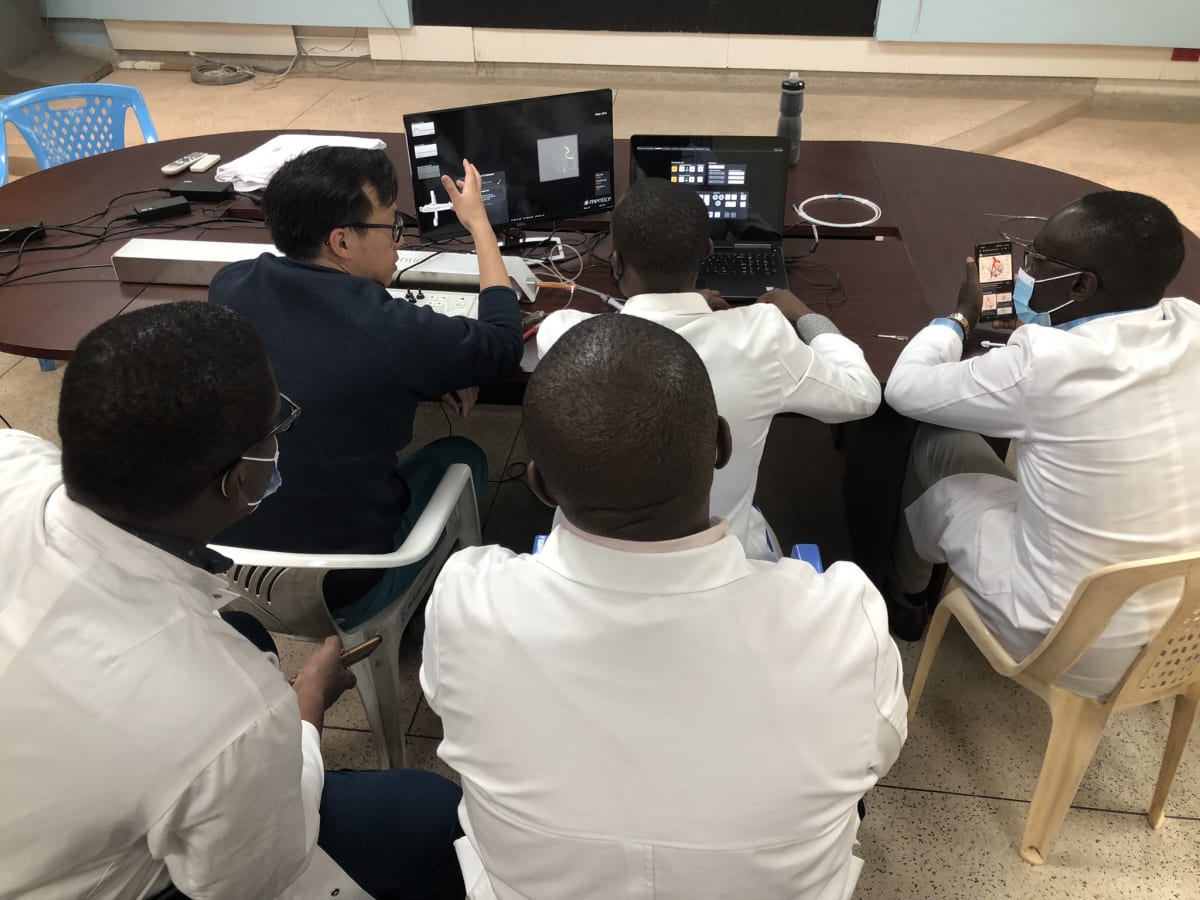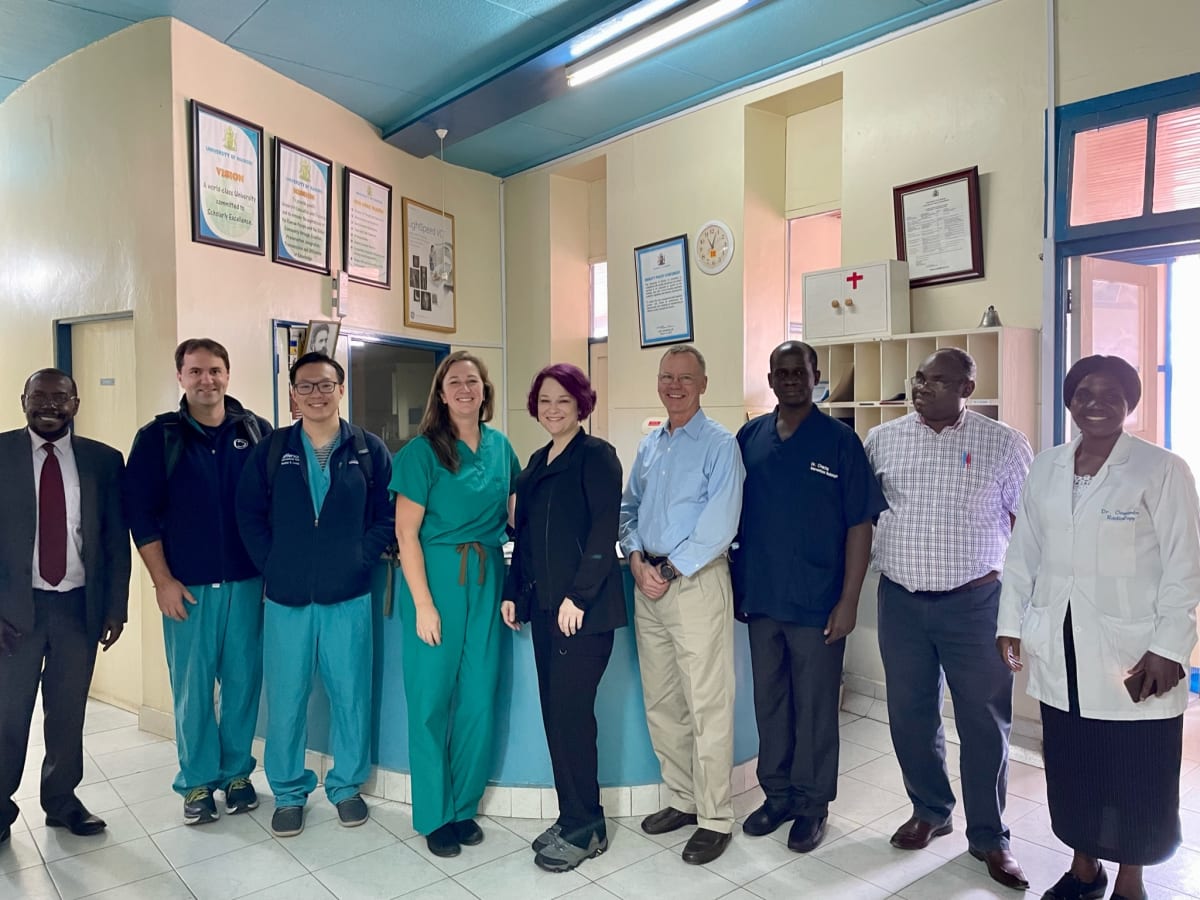My goal is to help improve and optimize access to medical imaging and radiology in Kenya, with a particular focus in interventional radiology, for increasing radiology’s contribution to global public health initiatives and patient care. Specifically, I plan to assist RAD-AID Associate Director Dr. Kevin Anton in education and case support at the University of Nairobi and Aga Khan Hospital for their new Interventional Radiology Fellowship. By bringing our expertise and knowledge from Thomas Jefferson Hospital, along with additional IR material resources, we plan to help train the inaugural IR fellows in Kenya. This will be through lectures and in-person consultation during real world cases. We hope to help the graduating fellows develop the core skills and knowledge of Interventional Radiologists. As they blossom into independent, competent practitioners, they can provide a minimally invasive, image guided specialty to the population of Kenya and to those who may need IR expertise in the country.
Our hope is that the entire population of Kenya will benefit from this project. An inaugural IR fellow in Kenya recently gave a fantastic talk about the current breadth of procedures that they perform in their country with their limited resources. An example included pre-operative intervention of a juvenile nasopharyngeal angiofibroma in order to minimize blood loss during resection. Another example included embolization of an arteriovenous malformation in a patient's hand in order to avoid amputation surgery and possibility of not being able to work. As the field of Interventional Radiology develops in Kenya, the entire population will benefit as they will have access minimally invasive image guided procedures which will either augment or be an alternative to current medical care in Kenya. Since the field is in its infancy in Kenya, most of population do not have access to this level of care. As level of training and number of providers increase, more and more people will be able to have access to these potential life changing procedures.
We will provide learning and in-person case support to the current attendings and fellows at the University of Nairobi and Aga Khan Hospital. We will also bring IR tools so that they have access to different ways of procedural treatment depending on the patient's clinical picture. The expected impact is to help the current Kenyan trainees become more comfortable and competent performing IR procedures. After we return, the hope is that IR physicians in Kenya will start to train their next generation and so forth. Once IR develops in Kenya, they will see different disease processes than we see in the USA and so inter-country collaboration will help facilitate future medical care.












In our two weeks in Nairobi, Kenya we worked with the Interventional Radiology fellows at Kenyatta National Hospital, The Nairobi Hospital and Nairobi West Hospital. The three fellows (Dr. Mwangi, Dr. Murayi and Dr. Kipchirchir) were very excited and eager to learn all things Interventional Radiology. We gave morning conference to the fellows and Radiology residents at the University of Nairobi and covered topics such as Vascular Access and Closure to Embolic Agents Used in Interventional Radiology. We then went to the procedure suites and worked 1-on-1 with the fellows and attending physicians, offering tips and tricks and advice during cases. It was inspiring and humbling to see the physicians take care of and treat the patient population with limited resources, utilizing ingenuity to provide important patient care. Additionally, at the beginning of the week we set up a vascular simulator (Mentice) and throughout the week in the afternoons we set up sessions with the fellows and Radiology residents, going through simulated vascular cases such as transarterial chemoembolization and uterine fibroid embolization.
The experience was worthwhile and rewarding. We hope the fellows learned as much IR from us as possible within the two weeks and incorporate that knowledge and experience into their own practice.